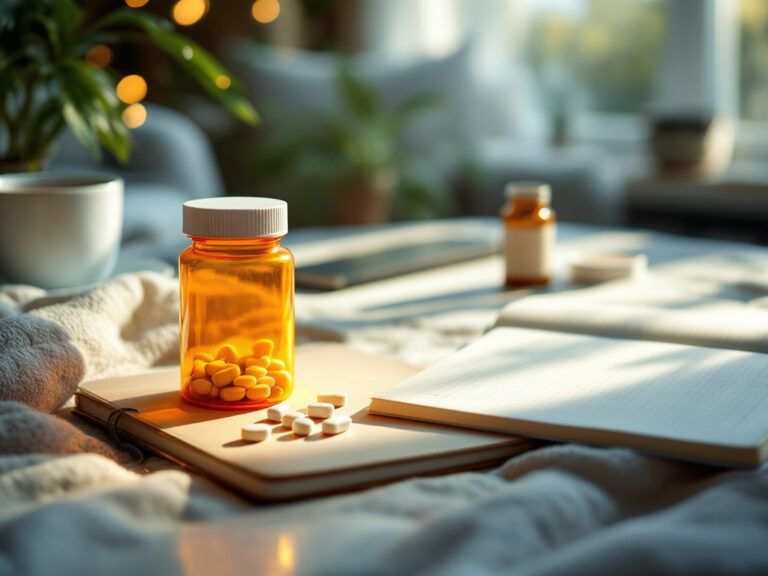When you’re struggling with opioid dependence, an opioid treatment program can offer the combination of medications, counseling and support you need to reclaim your life. An opioid treatment program delivers FDA approved medications alongside behavioral therapies to manage withdrawal, reduce cravings and guide you toward lasting recovery. Understanding how these programs work, the medications they offer, their accreditation standards and the services you’ll receive will help you decide if an opioid treatment program is right for you.
Understand treatment programs
Definition and goals
Opioid treatment programs, sometimes called medication assisted treatment clinics, deliver comprehensive care for opioid use disorder. When you enroll in an opioid treatment program, you gain access to FDA approved medications, counseling and behavioral therapies. These elements work together to:
- Prevent overdose deaths by stabilizing opioid receptors [1]
- Manage withdrawal symptoms so you can focus on recovery
- Reduce cravings and illicit opioid use
- Improve your social, occupational and psychological functioning
Program structure
Most opioid treatment programs follow a structured process to guide your recovery:
- Intake and assessment
You undergo a physical exam, psychological evaluation and review of your substance use history to tailor your treatment plan. - Treatment planning
Together with your care team, you set goals, choose medications and schedule therapy sessions. - Medication induction and maintenance
You start with a low dose of methadone or buprenorphine, then stabilize at a level that controls cravings without causing intoxication. - Counseling and therapies
You attend individual and group therapy, educational workshops and peer support meetings to address triggers and build coping skills. - Take-home medication privileges
As you demonstrate stability, programs may grant you take-home doses of methadone or buprenorphine under SAMHSA guidelines.
Program types
Opioid treatment settings vary so you can choose the option that fits your needs and lifestyle:
- Residential programs
Live onsite in a supportive environment with 24 hour supervision and structured activities. - Hospital-based inpatient programs
Integrate healthcare and addiction treatment for those with significant medical needs. - Intensive outpatient programs
Attend therapy sessions multiple times per week while living at home or working. - Standard outpatient programs
Visit the clinic daily or several times per week for medication dosing and weekly counseling. - Medication units
Receive medication and basic monitoring in a separate location, improving access in rural areas [2].
Explore FDA-approved medications
Methadone
Methadone is a long-acting opioid agonist that reduces withdrawal symptoms and cravings without producing euphoria when taken as prescribed. Key features:
- Daily dosing at a certified opioid treatment program
- Initial induction under medical supervision
- Take-home doses available after you demonstrate stability
- Backed by over 50 years of clinical research [3]
Common side effects include constipation and drowsiness. Your care team will adjust your dose to maximize comfort and safety.
Buprenorphine
Buprenorphine is a partial opioid agonist that eases withdrawal and curbs cravings while producing a ceiling effect that lowers overdose risk. Benefits include:
- Office-based prescribing by certified providers, including telehealth options
- Combination formulations with naloxone to deter misuse
- Flexible dosing schedules with possible take-home supplies
Most people experience mild side effects such as headache, nausea or insomnia. Your clinician will help you find the right dose and monitor progress.
Naltrexone
Naltrexone blocks opioid receptors, preventing any opioid drug from producing a high. It comes in two forms:
- Oral tablets taken daily, requiring strict adherence
- Monthly injections (Vivitrol) administered by your provider
Because naltrexone can precipitate withdrawal, you must be opioid free for 7 to 10 days before starting. It does not relieve withdrawal but helps maintain abstinence once detox is complete [3].
Supportive medications
Other medications may ease your transition into recovery:
- Lofexidine (Lucemyra) to relieve physical withdrawal symptoms such as muscle aches and sleep disturbances [3]
- Adjunctive medications for co-occurring mental health conditions, such as antidepressants or anti-anxiety drugs
Medication comparison table
| Medication | Mechanism | Setting | Take-home potential |
|---|---|---|---|
| Methadone | Full opioid agonist | OTP clinics, daily dosing | Yes, after stability |
| Buprenorphine | Partial agonist, ceiling effect | Office based, telehealth possible | Yes, with clinic discretion |
| Buprenorphine/naloxone | Partial agonist/antagonist | Office based, telehealth possible | Yes, reduces misuse risk |
| Naltrexone | Opioid receptor antagonist | Oral or monthly injection | Not until induction complete |
| Lofexidine | Alpha-2 agonist | Prescribed by provider for withdrawal | N/A |
Review accreditation requirements
Federal certification process
Clinics must be certified by the Substance Abuse and Mental Health Services Administration (SAMHSA) to provide opioid treatment services. Certification verifies compliance with 42 CFR Part 8, covering:
- Patient assessment, admission and discharge procedures
- Staff qualifications and training
- Medication storage, administration and record keeping
- Safety protocols and overdose preparedness
Accreditation by approved bodies
After SAMHSA certification, programs seek accreditation from a SAMHSA-approved accrediting organization. Accreditation involves:
- Peer review evaluation of clinical practices and patient outcomes
- Site visits to observe operations and interview staff
- Verification of policies for infectious disease screening, vaccinations and overdose education [4]
State and local licensing
States require opioid treatment programs to hold a license from their health department. State regulations govern:
- Clinic locations and zoning
- Staff licensure for physicians, nurses and counselors
- Reporting of patient deaths or program changes within defined time frames [5]
Quality assurance and monitoring
Certified and accredited programs implement quality assurance measures such as:
- Regular audits of medication prescribing and dispensing
- Ongoing staff training on best practices
- Patient satisfaction surveys to improve services
- Collaboration with regulatory agencies to stay current on federal guidelines [2]
Assess service offerings
Counseling and behavioral therapies
Combining medication with evidence based psychotherapies addresses the complex factors underlying addiction. Common modalities include:
- Cognitive behavioral therapy to challenge negative thought patterns and develop coping skills
- Motivational interviewing to strengthen your commitment to change
- Contingency management, offering incentives for treatment adherence and clean drug screens
- Family therapy to improve communication and involve loved ones in your recovery
Peer recovery support
Peer recovery specialists share lived experience to:
- Lead support groups and mutual aid meetings
- Mentor you through milestones such as transitioning to independent living
- Provide encouragement and accountability
Comprehensive medical care
Beyond addiction medications, programs often include:
- Medical supervision for co-occurring health conditions
- Infectious disease screening and treatment for HIV, hepatitis C and other infections
- Vaccination programs for hepatitis A and B
- Referrals to primary care providers for chronic disease management
Overdose education and harm reduction
Your safety is paramount. Programs must provide:
- Training on recognizing and responding to an overdose
- Distribution of naloxone kits for emergency use
- Information on Good Samaritan laws that protect callers during an overdose event [1]
Holistic and wellness services
Many programs offer complementary services to support whole-person recovery, such as:
- Yoga, meditation and mindfulness training
- Nutrition counseling and exercise programs
- Vocational training and educational support
- Social and recreational activities to rebuild community connections
Compare payment options
Medicare and Medicaid coverage
If you have Medicare Part B, coverage may include:
- Dispensing and administration of medication assisted treatment
- Counseling sessions, group therapy and peer support
- Toxicology testing
- Overdose education and naloxone distribution [4]
Most state Medicaid programs cover medication assisted treatment at low or no cost.
Private insurance and employer based plans
Many private insurers support medication assisted treatment and behavioral therapies. To maximize benefits:
- Verify coverage details and provider networks
- Confirm prior authorization requirements for medications or therapies
Federal and state grant funding
State and Tribal Opioid Response grants and supplemental funding expand access to treatment:
- SAMHSA awards over $45 million to support sober housing for young adults [6]
- HHS allocates more than $1.5 billion in continuation funding for FY 25 [6]
Sliding scale fees and self pay
If you’re uninsured, many programs offer sliding scale fees based on income. Some facilities provide payment assistance or scholarships.
Employer assistance and community resources
Explore employer based assistance programs, veteran benefits or nonprofit organizations to help cover costs. Community health centers may also partner with charities to offset treatment fees.
Evaluate treatment outcomes
Reduced mortality and overdose risk
Research demonstrates that medication assisted treatment significantly lowers your risk of death:
- All cause mortality during opioid agonist treatment is more than 50 percent lower than out of treatment [7]
- Overdose death rates are substantially reduced during outpatient medication programs [8]
- US overdose deaths reached 91,799 in 2020, with opioid fatalities ten times higher in 2021 than in 1999 [9]
Improved retention and recovery
Studies show similar retention rates for methadone and buprenorphine naloxone, helping you stay engaged in care [10]. Longer retention correlates with better recovery outcomes.
Enhanced quality of life
Treating both biological and behavioral aspects of opioid use disorder can lead to:
- Increased employment or educational attainment
- Improved mental health and well-being
- Stronger family and social relationships
- Better overall physical health
Long term support and relapse prevention
Programs often include relapse prevention planning and ongoing support:
- Peer recovery groups for continued encouragement
- Transition to office based or telehealth medication management
- Connections to drug addiction rehab for comprehensive care if you face challenges with other substances
- Coordination with specialty programs such as a cocaine rehab program or meth addiction treatment
Plan next treatment steps
Research and compare programs
Create a list of local opioid treatment programs and verify:
- Federal certification and accreditation
- State licensing and compliance
- Available medications and dosing schedules
- Counseling, therapy and support services
Prepare for intake assessments
When you contact a program, ask about required documentation. Be ready to share:
- Personal identification and insurance details
- Medical, psychiatric and substance use history
- Current medications and dosages
- Any legal requirements or referrals
Ask key questions
Choose a program where you feel confident by asking:
- Which medications are available and what are the take-home policies?
- How often are counseling and therapy sessions scheduled?
- What overdose prevention training and naloxone distribution do you offer?
- How is aftercare planned and what peer support is available?
- What costs are involved, which insurances are accepted and what financial assistance exists?
Leverage additional support
Enhance your recovery with complementary services:
- Benzodiazepine detox and treatment for co-occurring sedative use
- Prescription medication abuse rehab for prescription opioid misuse
- Alcohol rehab program if alcohol is also a concern
- Community support meetings like Narcotics Anonymous or SMART Recovery
Commit to ongoing care
Recovery is a long-term process. After initial treatment:
- Continue medication management with a qualified provider
- Attend regular therapy sessions to reinforce coping strategies
- Participate in peer support and sober living programs
- Check in with your care team to adjust your plan as needed
When you choose an opioid treatment program, you access a combination of proven medications, tailored therapies and supportive services that together significantly improve your chances of recovery. By carefully researching programs, preparing for intake and committing to ongoing care, you take control of your journey toward health and stability. Reach out to a local opioid treatment program today to learn how you can benefit from this life-saving approach.
You can also explore specialized resources for other substances: our prescription drug addiction treatment page, fentanyl addiction recovery guide, or a heroin treatment center overview.






